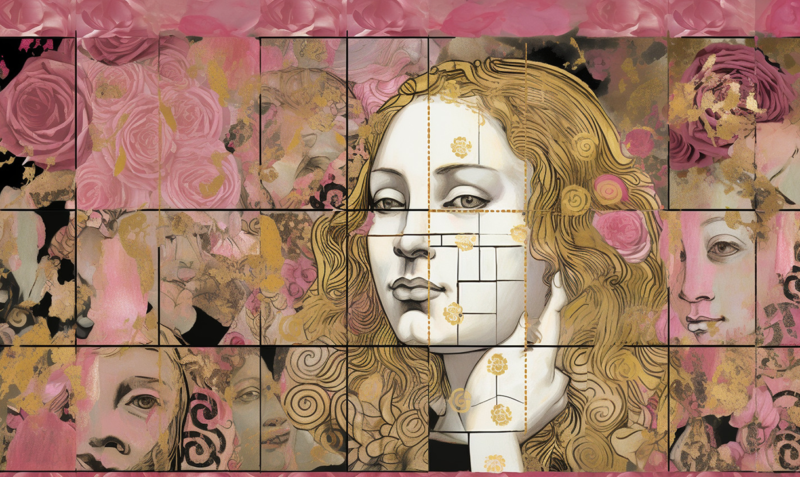
Art has been a central part of human culture since the earliest days of civilization. From the prehistoric cave paintings of Lascaux to the vibrant NFT marketplaces of today, art has evolved in ways that mirror our society’s development and technological advancements. In this article, we’ll journey through the history of art, examining key movements, innovations, and transformations that have brought us to the digital age.
1. The Dawn of Art: Prehistoric and Ancient Art
The earliest known art forms are found in caves, where prehistoric humans used natural pigments to create images of animals and symbols. These artworks, dating back tens of thousands of years, served as both a form of expression and communication. From Africa to Europe, cave paintings reveal insights into early human life, their beliefs, and their environment.
Ancient civilizations, such as the Egyptians, Mesopotamians, and Greeks, developed more sophisticated art forms, creating monumental architecture, sculptures, and pottery. Art was deeply entwined with religion and politics, and these societies used it to convey power, honor gods, and immortalize leaders.
2. The Middle Ages to the Renaissance: Art as a Reflection of Society
During the Middle Ages, art was largely influenced by religion. Artists focused on biblical themes and used symbolic imagery to convey spiritual narratives. This period, marked by a focus on religious devotion, saw the construction of grand cathedrals adorned with stained glass and intricate sculptures.
The Renaissance, beginning in the 14th century, was a turning point in art history. Artists such as Leonardo da Vinci, Michelangelo, and Raphael transformed art with their studies of anatomy, perspective, and human emotion. Art became a means to explore science, nature, and individualism, signaling a shift toward realism and away from the religious focus of the Middle Ages.
3. The Birth of Modern Art: 19th and Early 20th Century Innovations
In the 19th century, art continued to evolve with movements like Impressionism, which broke away from the strict realism of earlier eras. Artists like Claude Monet and Vincent van Gogh experimented with light, color, and brushstroke techniques to capture fleeting moments and emotions. This period paved the way for modern art.
The early 20th century saw the rise of avant-garde movements like Cubism, led by Pablo Picasso and Georges Braque, and Surrealism, championed by Salvador Dalí. These movements challenged traditional notions of art, emphasizing abstraction and the unconscious mind. The innovations of this era laid the foundation for contemporary art forms and opened the door to new ways of seeing the world.
4. The Digital Age: Art Meets Technology
With the advent of computers and the internet, art entered a new era. Digital art emerged as artists began using software to create works that could be shared globally. Photography and video art also gained popularity, allowing artists to explore new media and concepts.
The internet revolutionized art consumption, making it accessible to a global audience. Online galleries and social media platforms democratized art, allowing artists to reach viewers without the need for traditional gallery spaces. This shift has allowed for a more diverse range of voices and styles to thrive in the art world.
5. The Rise of NFTs: Art in the Blockchain Era
Non-fungible tokens (NFTs) represent the latest development in art’s evolution. NFTs are digital assets that use blockchain technology to verify ownership and authenticity, allowing digital art to be owned, sold, and collected in a new way. This trend exploded in 2021 when Beeple’s digital artwork sold for over $69 million, making headlines worldwide.
NFTs have divided opinions within the art world. Supporters argue that they empower artists by providing new revenue streams, while critics question their environmental impact and speculative nature. Despite the debate, NFTs have reshaped the landscape of digital art and continue to attract interest from collectors and artists alike.
6. What Does the Future Hold for Art?
Art’s evolution from cave paintings to NFTs reflects humanity’s ongoing quest to express, innovate, and challenge conventions. As technology continues to advance, the boundaries of what constitutes art are likely to expand further. AI-generated art, virtual reality exhibitions, and interactive installations are just a few of the possibilities on the horizon.
Ultimately, art will continue to evolve alongside society, reflecting our values, concerns, and aspirations. Whether through traditional media or digital platforms, art will remain an essential part of our shared human experience.
Conclusion
The journey of art from prehistoric cave paintings to NFTs highlights the dynamic nature of human expression. Art has adapted to reflect the changes in society, technology, and culture. As we look to the future, we can only imagine what new forms and innovations will emerge. For now, NFTs represent the latest chapter in art’s evolution—a testament to our unending creativity and the boundless possibilities of the digital age.







